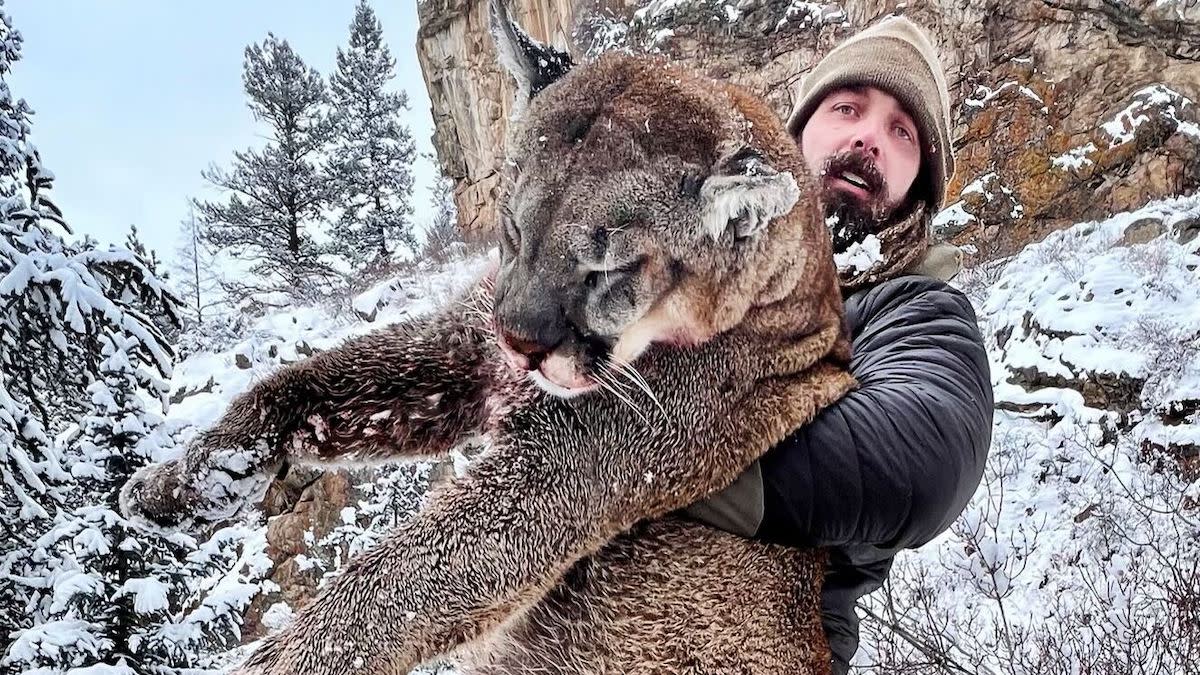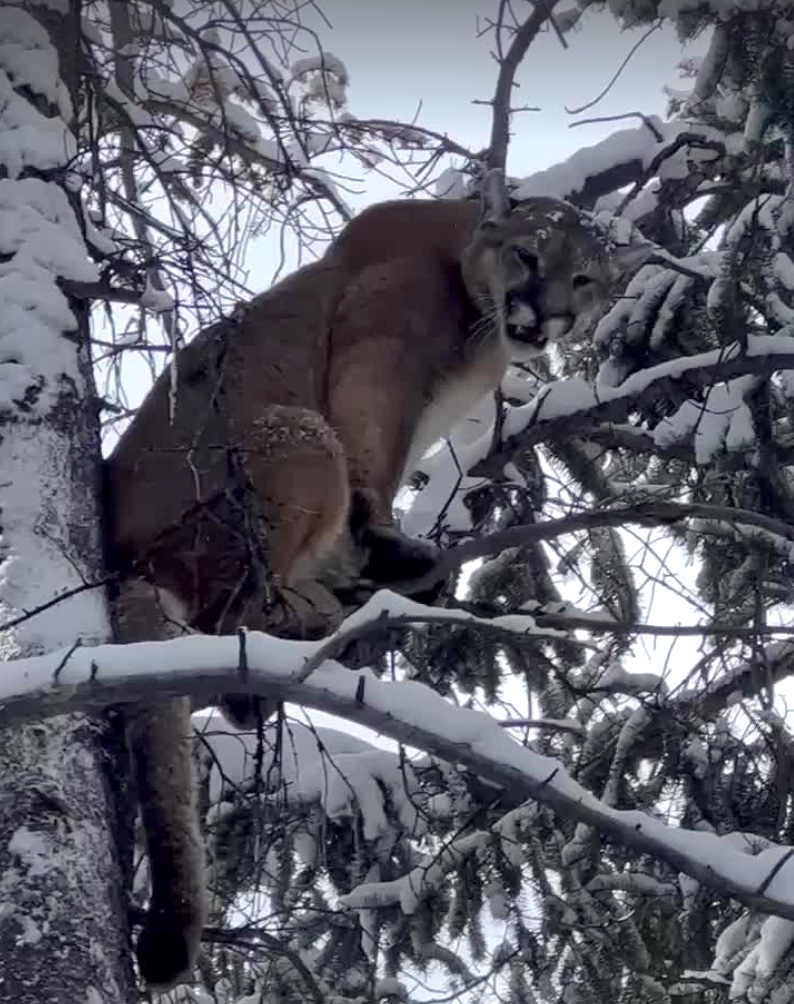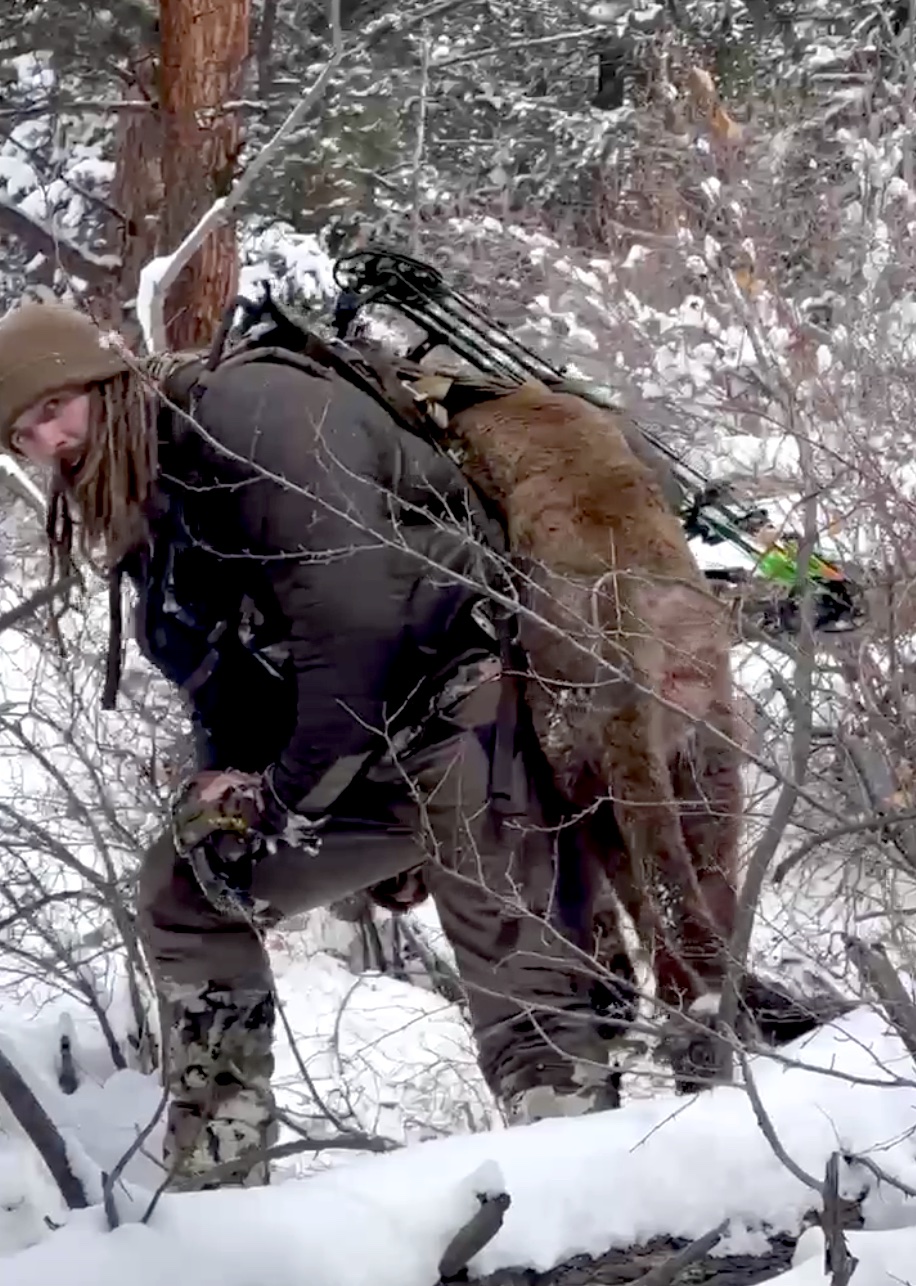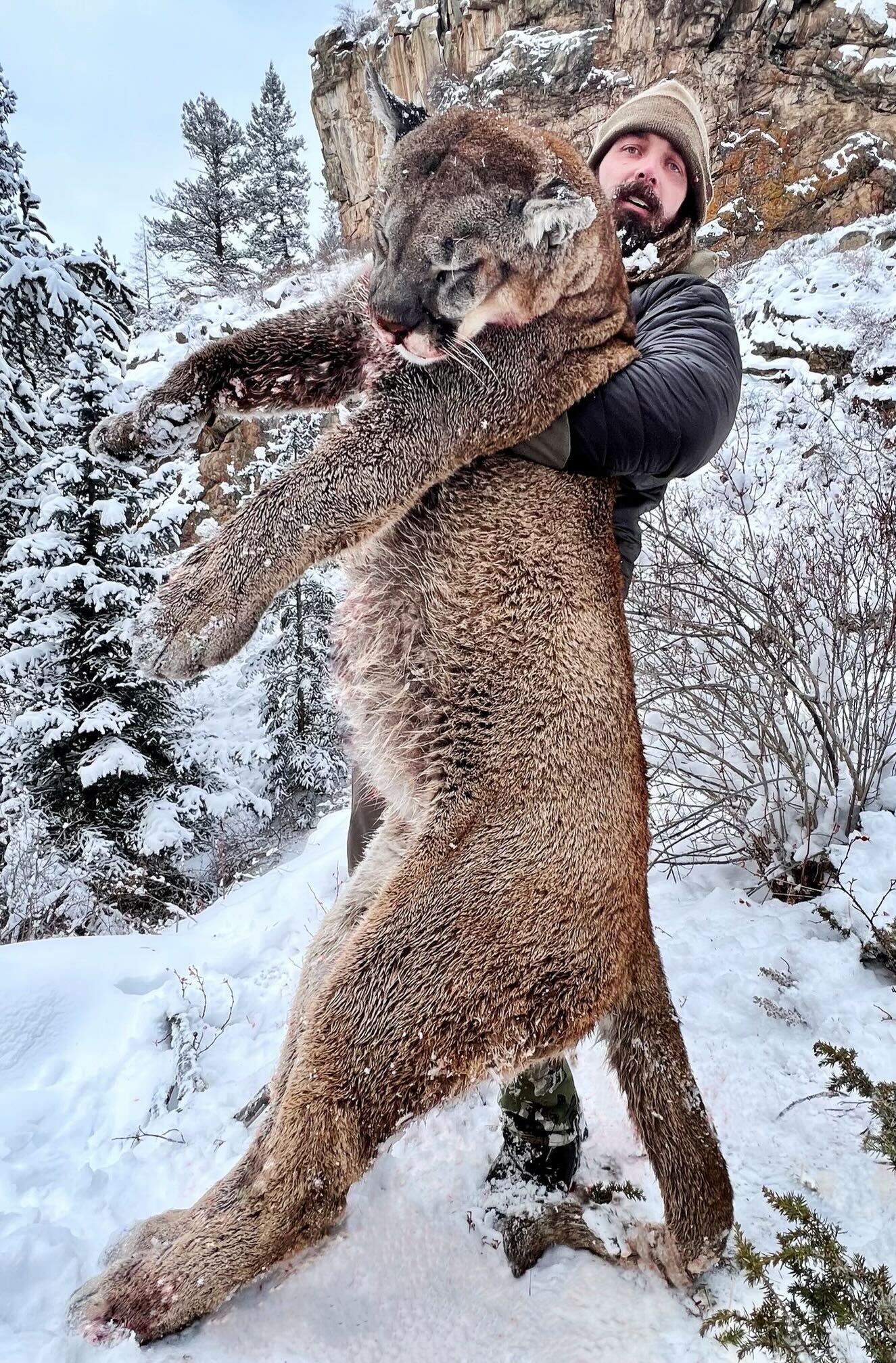
By now, you’ve probably seen the photo of former Bronco defensive lineman Derek Wolfe and the enormous mountain lion he recently shot in his home state of Colorado. The cat, which dressed at 173 pounds, will likely make the Boone and Crocket record books, but that’s not what’s getting Wolfe so much attention.
While the hunting community celebrates Wolfe’s success in harvesting what by many accounts was a problem cat, he’s also received backlash from those who don’t understand what lion hunting—and the vital role it plays in wildlife management—is all about.
“People just don’t understand it,” Wolfe told MeatEater. “Conservation is a science-based approach to the management of wildlife, and regulated hunting like this is an important conservation tool.”
The conservation of mountain lions in Colorado is a stunning success story. After a near century of bounty hunting, by the 1960s, Colorado’s lion population was estimated to be as low as 124 cats. After abolishing lion bounties and regulating hunting in 1965, Colorado’s lion population began to recover. Today, the cat population has exploded in Colorado with estimates ranging from 3,000 to 7,000 animals.
Like any other game species, these big cats need to be managed in accordance with the goals of biologists. Regulated hunts like Wolfe’s are an important tool in achieving these management goals.

Biologists take into account many factors when determining how many lions can be taken by hunters. A large part of the equation is making sure lions don’t exceed the carrying capacity of their core range. When the lion population does exceed that carrying capacity, cats are pushed into the fringes of their range, which often overlap with suburban and even urban communities. These are the places where the predators are most likely to have unwanted interactions with livestock, pets, and people.
“People don’t understand how many cats are out here and why we need to hunt some of them. They think it’s illegal—they keep calling CPW to report me,” Wolfe said. How the public doesn’t seem to understand the magnitude of Colorado’s lion population is beyond him.
“A couple years ago, not ten minutes from where we chased this cat, a lion attacked an 8-year-old boy playing in his backyard,” Wolfe said. “I’m not saying there's a million mountain lions out there trying to kill you, I’m just saying, there are a lot of them, and they get into communities and cause trouble.”
Folks who live in the area are all too familiar with the trouble these big cats can cause.
“We were knocking on doors, trying to get permission to access these people’s land, but no one answered, except for a neighbor who said she’d had the cat under her porch, and that her dogs and cats wouldn’t leave the house,” Wolfe said. “In the snow, you could see where the lion cruised around the neighborhood. We really wanted to get permission from one guy who owned the land where we saw tracks cut through, but couldn’t get a hold of him.”
After a few hours of driving around and trying to get access, Wolfe and his hunting partner, Alex Nester, were about to give up. But as they were leaving, they passed by the property where the track cut through once more, and this time, the homeowner was in his driveway.
“He flagged us down and asked us if we were lion hunters,” Wolfe said. “Then he asked us if we saw the tracks by his house. We told him that we had and that we’d knocked on his door twice.”
As it turns out, the homeowner had heard the pair, but, not expecting any visitors, thought the noise at his door was the lion. He told Wolfe and Nester that he frequently saw the lion on his property, including on and under his porch. Even more alarming, he had seen the lion peering back at him through his living room window on more than one occasion. He enthusiastically granted Wolfe and Nester permission to access his land.
Although the cat was indeed a problem for the local community, Wolfe wants to make it clear that outlets touting him as “the hero who saved the village from the lion” are blowing things out of proportion.
“Man, some outlets are making it seem like there was a lion terrorizing the village, so they put up the bat signal and here came Derek Wolfe to save the day,” Wolfe said. “It wasn’t like that. I just love to hunt and had the chance to go run a lion with my buddy.”

“Run a lion” is lion hunter shorthand for releasing hounds on a fresh mountain lion track and following them until they chase the cat up a tree, where it will likely remain until it’s shot or the hounds are called off. That’s a sticking point for some.
Critics of hound hunting view it as being outside the spirit of fair chase, or as a form of hunting lacking some essential challenge. In Wolfe’s experience (and the shared experiences of lion hunters across the country) hound hunting is anything but easy. The physical demands are extreme. Even as a former professional athlete (Wolfe retired from football in 2022), he counts this lion hunt among the most difficult things he’s ever done.
Starting the hunt at an elevation of 7,700 feet, Wolfe and Nester began to follow the sound of baying hounds. “It was brutal, we were just following the mountain lion from cliff to cliff. Everything was rim rock covered in snow, you couldn’t sidehill, and the only two directions to go were straight up or straight down. I literally had to crawl on my hands and knees,” Wolfe said.
After jumping the lion twice, Wolfe and Nester finally caught up to the cat when it treed for the third and final time at 9,600 feet—five hours, two drainages, and many thousands of gained and lost vertical feet later.
“I was having full body cramps by the time I got to the cat,” Wolfe said.
He doesn’t remember much about the shot, aside from being exhausted and having to call on his professional sports experience to summon his remaining energy, gather himself, and shoot the cat. It was a good shot, but in that moment, Wolfe didn’t feel a surge of adrenaline or triumph. He was mostly just spent.

“After the shot, Alex sprinted downhill with the dogs and found him. The lion jumped from the tree and didn’t go more than thirty yards. I was so tired, I just had to sit there and recover for a bit. It took me like thirty minutes to get to the cat,” Wolfe said.
When he finally walked up to it, the tom was 8½-feet-long with an estimated live weight of well over 200 pounds. The skull measured around 15 inches before the drying period.
Despite its impressive size, Wolfe says that harvesting the lion was the end of a journey rather than the pinnacle of the experience. In the world of lion hunting, that feeling is pretty universal. For most dedicated lion hunters, the thrill has little to do with the taking of an animal. The true allure of lion hunting is almost entirely in the pursuit, and the places that pursuit takes you. For many, the harvest is secondary, if it occurs at all. It’s not uncommon for houndsmen who have treed hundreds of cats to have only harvested two or three themselves.
Now that the dust has begun to settle, Wolfe has had a chance to reflect. While he’s used to being in the public eye, this is the first time it’s had anything to do with hunting. He plans to seize the opportunity as a chance to bring his love of the great outdoors to the masses and advocate for hunters rights. Access to the outdoors is deeply important to Wolfe—besides the football field, nature was a singular refuge throughout a difficult childhood.
“I grew up really poor. I don’t know my dad, my mother was an addict and landed in jail when I was 12, and my stepfather was abusive. The only places I found peace were on the football field and in the outdoors,” Wolfe said.
Wolfe is making it his post-football mission to ensure that outdoor opportunities are available to children who grew up like him. He thinks that starts with uniting all hunters as members of one community.
“Going forward, my goal is to bring hunters together. We’re all hunters, and we need to support each other. There are groups that are trying to take hunting away from us, and if we want to preserve hunting for future generations, we need to come together and ditch the infighting.”
When asked what his plans were for the lion, Wolfe said the cape is at the taxidermist and beetles are cleaning the skull. “But what I’m really looking forward to,” Wolfe said, “is the breakfast sausage.”

Images via Derek Wolfe.





